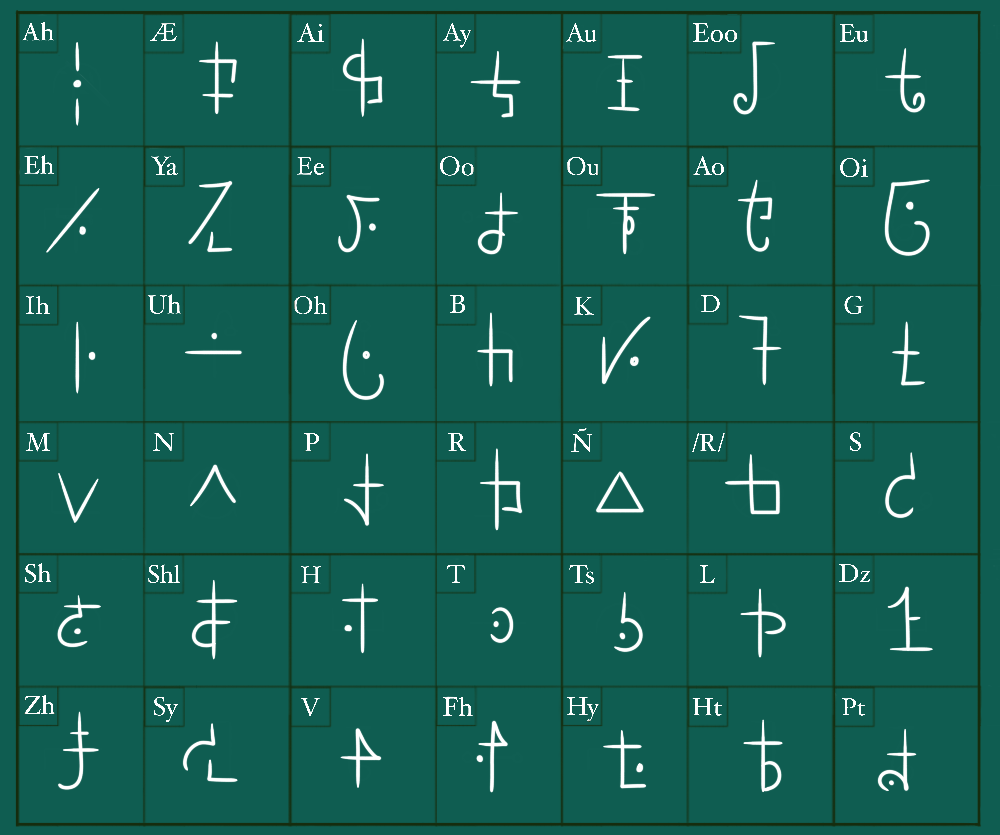Arbor
Arbor is an alphabetic language, written right to left, verb-subject-object. It has the largest alphabet of any spoken language, with 42 letters. It doesn't use diacritics or articles. Particles are used to indicate possession, location, time, and direction, as well as as vocatives, pragmatics, formalities (or insults), connectives, and conjunctions.
Speaking in Arbor places much emphasis on formality and hierarchy, built into the language mostly via particle use. There are particles whose sole purpose is to indicate the degree of respect, familiarity, status, or disrespect the speaker intends. These are usually placed at the beginning or end of sentences, but may also go after certain verbs, nouns, or pronouns. Particles cannot be placed adjacent to one another with the sole exception of formality particles, which may be followed by another, grammatical, particle.
Speaking without formality particles is very familiar, usually percieved as childlike (children are usually not expected to use formality particles, incorporating them into their speech slowly as they age). Adults usually speak to children without formality particles, but to speak to other adults without them is often seen as either immature (of the speaker) or patronizing (of the listener), or both. Adults instead use familiar particles when speaking with family and friends, polite but equal particles when speaking with strangers or acquaintances, respectful particles when speaking with superiors or the elderly, and different, higher-status respectful particles when speaking with very important people such as governmental or religious leaders. There are also particles that indicate disgust, disrespect, or otherwise insulting sentiments that are obviously rarely used in polite society.

"Shleya bouk dzayñen aotal voh."
"This is an example sentence."
'Voh' in this sentence is an example of a particle that expresses certainty. It is typically used in either academic or otherwise professional contexts in which the information being conveyed is A: unknown to the listener, B: unquestionable fact, or both. It may also be used to show confidance in one's opinion, expressing that the speaker believes whatever they are saying to be as unquestionable as a proven fact.